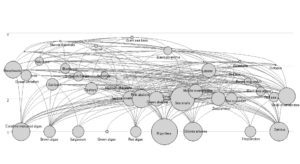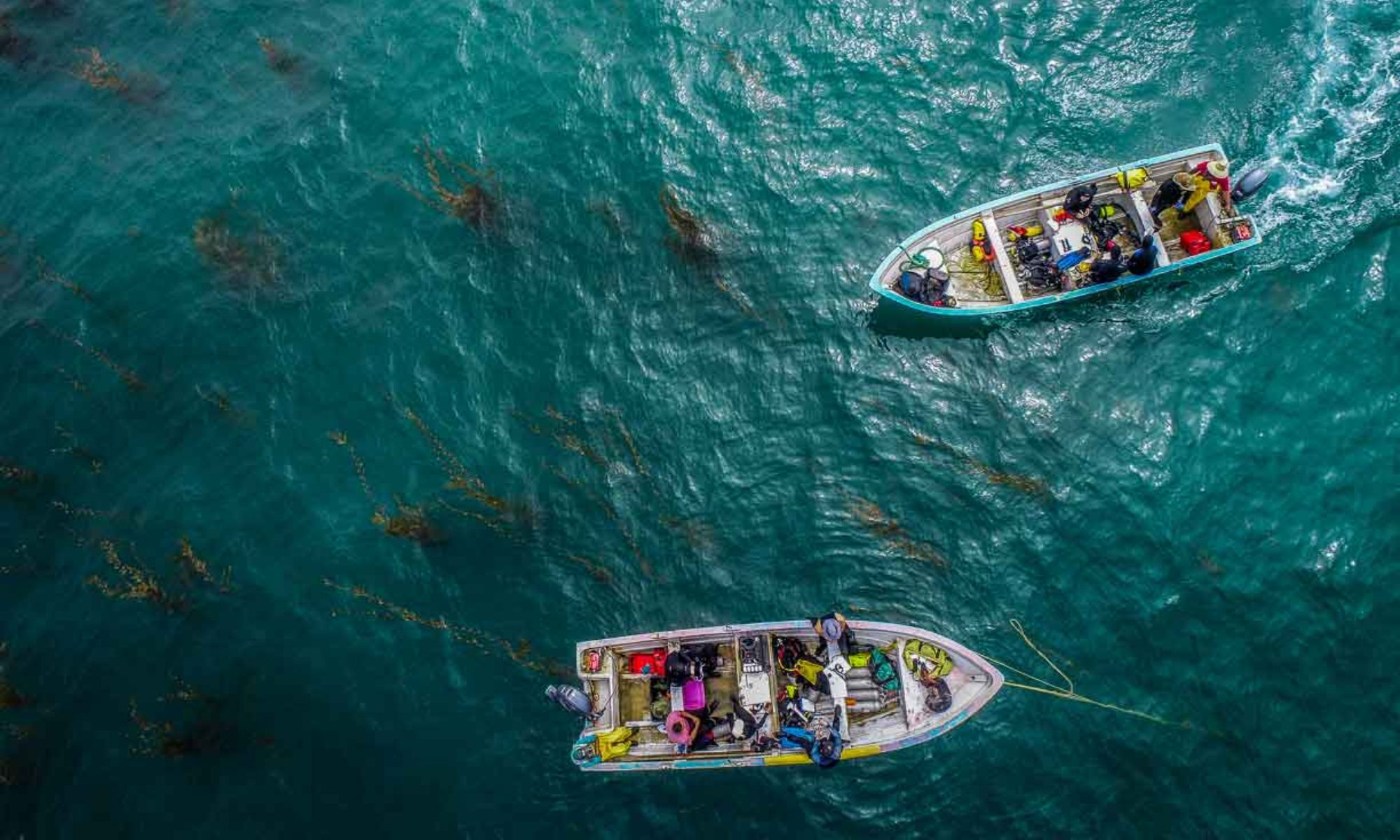Coastal ecosystems are influenced by a suite of drivers and interactions, resulting in complex dynamics not captured by single species, single driver approaches. Kelp forest ecosystems of the California Current region are subject to extreme environmental variability, and as a suite of fishing activities removing organisms throughout the food web. Here, we present a food-web to assess ecosystem-wide effects of different fishing strategies, as well as the effect of warming, acidification and hypoxia on the structure and function of highly productive temperate ecosystems. We built a mass-balanced model of a kelp forest ecosystem at the southern limit of distribution in the northern hemisphere (Isla Natividad, Mexico). The model is informed by extensive ecological monitoring of fish, benthic invertebrates, and macroalgae conducted annually from 2006 to 2016 at 5 sites around the island. The model includes 40 functional groups (FG) defined on the basis of commercial interest, ecosystem function and feeding guild, including birds, marine mammals, fish (13 FGs), commercial species (7 FGs), macroinvertebrates (8 FGs), zooplankton, giant kelp Macrocystis pyrifera, six macroalgae, phytoplankton and detritus. The estimated throughput is 4,344 t·km-2·year-1 (36.3% total consumption, 15.9% total exports, 24% total respiration and 23.7% detritus). The net production is 569 t·km2·year-1, with a respiration/production ratio 1.55, suggesting that the ecosystem is close to maturity. A model based on a detailed, multi-year monitoring program in a kelp forest at the southern limit provides a valuable tool for exploring drivers of change in these vulnerable marine ecosystems and fisheries.




